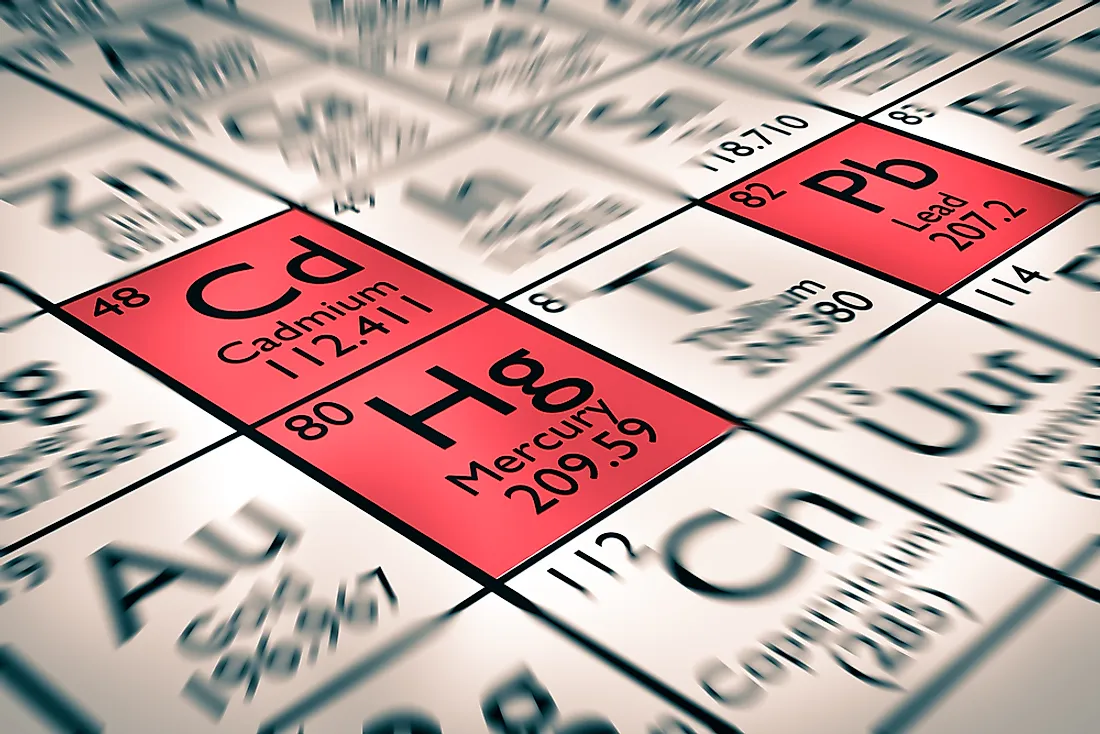What Are The Effects Of Cadmium Poisoning?

Cadmium is a naturally occurring heavy metal mainly found as deposits in the earth’s crust and has an atomic mass of 112.4g/mole. Cadmium metals have a white silvery and bluish tinged surface color. Cadmium shares many chemically properties with zinc, but it differs from zinc in that it is capable of forming much more complex compounds. The industrial uses of cadmium include; making of solar batteries, pigments, coatings, and stabilizers in making plastic. Cadmium has also been used in electroplating of some metals used in transport equipment, machinery, enamel products, and photography. Cadmium is also used in refining zinc metal and its byproduct is one of the leading causes of cadmium poisoning. The widespread industrial use of cadmium has led to the exposure to human beings, animals, and the environment.
Human Health
Human beings get exposed to cadmium through the foods they take and in the places they live or work. Foodstuffs such as liver, shellfish mushrooms, mussels, cocoa, and seaweed are very rich in cadmium and when taken, expose people to the element. Those who stay close or work in waste sites and refineries can also be exposed to cadmium through the wastes emitted.Excessive exposure to cadmium causes adverse health effects such as diarrhea, vomiting, nausea, liver damage, and renal failure. Smoking of tobacco in areas with high cadmium fumes introduces cadmium into the bloodstream which increases the level of cadmium already present in the body. High level of cadmium in the human body leads to damage to internal organs such as liver, lungs, blood, and kidney and if not controlled properly may lead to death. Excessive exposure of cadmium may trigger the development of cancer in the human body.
Environment
Cadmium is released into the environment mainly through industrial waste streams, leaching of landfills and other operations associated with the handling of cadmium or zinc. When industrial wastes stream containing cadmium find their way into the environment, they poison the air, soil, and surface water. For instance, cadmium can be released into drinking water from the corrosion of galvanized water pipes and into the air through the burning of fossil fuels. The Plants will absorb cadmium present in the soil in the form of organic matter for their growth and development. When the animals feed on these plants, they will increase the level of cadmium in their body system. The increased level of cadmium may expose them to health risks and even death. The presence of cadmium in the soil will poison the living organisms living in the soil and eventually affects the whole ecosystem in the soil. In some aquatic environments, cadmium is known to accumulate in mussels, lobsters, and fish among others. When animals take cadmium-contaminated water and foods, their internal organs such as kidney, liver, and brain may be damaged by the heavy metal.
Regulation Of Cadmium
Due to potential health risks posed by exposure to cadmium-contaminated materials, it is critical that the amount of cadmium present especially, in drinking water be regulated to minimize the associated health problems. In the US the Congress passed Safety drinking water Act in 1974 and charged EPA with the responsibility of determining the safety levels of chemicals in drinking water. Subsequently, the Maximum Contaminant Level Goal for each chemical was determined. The MCLG for cadmium was determined and set by EPA at five parts per billion. The Maximum Contaminant Level Goal for a chemical is the safe level or amount of the chemical in drinking water which may or will not cause health problems when taken by human beings or animals.











